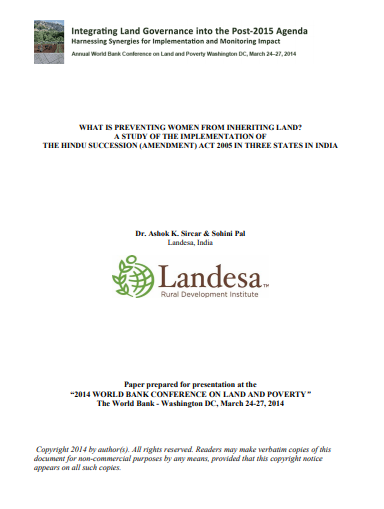Status of the Voluntary Guidelines: Where we are, where we are going
Congressional Briefing hosted by Congresswoman Betty McCollum on March, 28 2014Remarks by Dr. Gregory Myers, Land Tenure and Property Rights Division Chief, USAID (as written)
First, I would like to thank Congresswoman McCollum for hosting this event and ActionAid for organizing and bringing all of us together for this important briefing. I would also like to thank Congresswoman McCollum’s staff for their attention to these critical issues.




